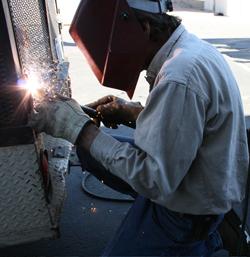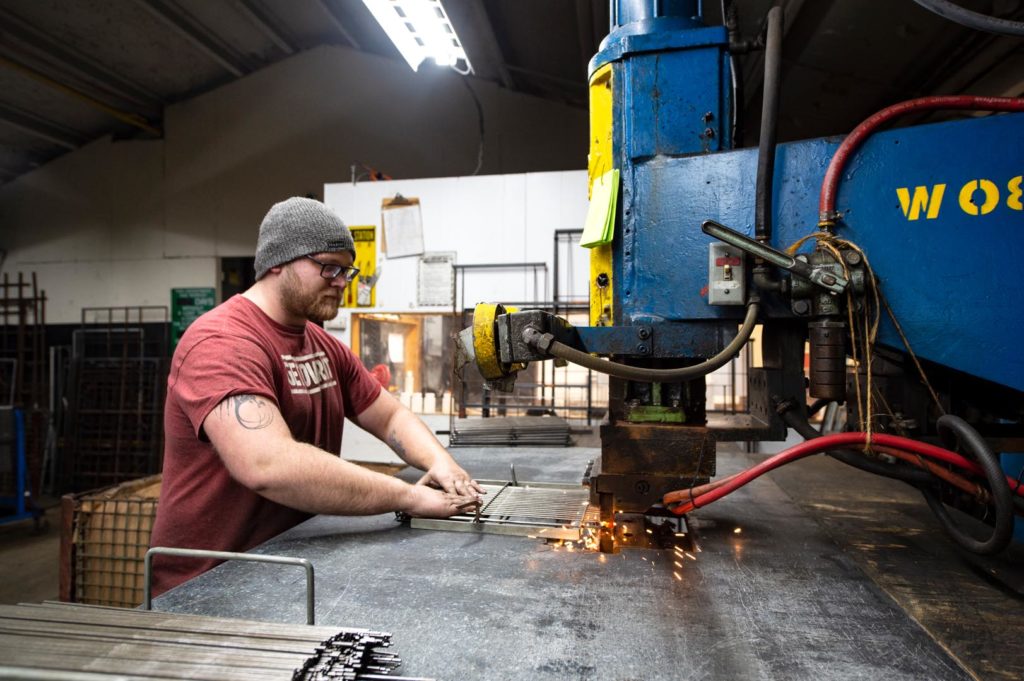Everything about Welding: Secret Insights Into Techniques and Best Practices for Success
Welding includes a range of methods, each matched for certain products and applications. Understanding these techniques, such as GMAW, SMAW, and TIG, is important for accomplishing ideal results. Furthermore, the right devices and security practices can not be ignored. As prep work and repairing play critical duties in the welding process, grasping these aspects can considerably improve the quality of the end product. What are the essential factors that assure an effective weld?
Understanding Various Welding Techniques
Welding techniques encompass a range of techniques, each suited to particular applications and products. Among one of the most typical strategies are Gas Metal Arc Welding (GMAW), Protected Metal Arc Welding (SMAW), and Tungsten Inert Gas Welding (TIG) GMAW, also referred to as MIG welding, is prominent for its speed and versatility, making it optimal for thin products. SMAW, or stick welding, is favored for its simplicity and effectiveness in outside atmospheres, specifically with thicker steels. TIG welding provides accuracy and control, making it ideal for detailed work and non-ferrous steels (Montana Mobile Welding and Repair Fabrication). Each technique has its special advantages and considerations, allowing welders to pick the ideal method based upon the task's needs, product type, and desired end results. Recognizing these techniques is important for effective welding
Crucial Welding Devices and Tools
While various welding techniques call for particular skills, the appropriate equipment and tools are similarly essential for attaining quality results. Essential welding tools includes welding machines, which vary relying on the strategy-- such as MIG, TIG, or stick welding. Protective gear, consisting of handwear covers, helmets, and aprons, guarantees security and convenience throughout the procedure. In addition, clamps and fixtures assist protect materials in position, making sure accuracy in welds. Consumables like welding rods, wire, and securing gas are additionally vital components that influence the top quality of the weld. Tools such as mills and cutters help with surface prep work and post-weld completing, contributing to an expert result. Buying top quality equipment inevitably improves the efficiency and performance of welding jobs.
Security Practices in Welding
Proper safety methods are necessary in the welding market to protect employees from potential threats. Welders have to use ideal personal safety devices (PPE), including headgears with appropriate shading, handwear covers, and flame-resistant garments. Adequate air flow is important to lower direct exposure to unsafe fumes and gases generated during the welding procedure. Additionally, workers need to be learnt the proper handling of welding devices to stop mishaps. Fire precaution, such as maintaining flammable materials away from the welding location and having fire extinguishers easily available, are required. Routine examinations of devices and offices can assist determine possible threats prior to they cause crashes. By sticking to these security practices, welders can develop a safer working atmosphere and decrease dangers linked with their trade.
Preparing Products for Welding
Preparing products for welding is a crucial step that greatly influences the high quality and honesty of the end product (Montana Mobile Welding and Repair Belgrade Fabrication). Appropriate prep work entails cleaning the surface areas to remove contaminants such as rust, oil, and dust, which can endanger the weld. Techniques such as grinding, sanding, or utilizing solvents are frequently used to attain a tidy surface area. In addition, making sure that the products mesh snugly is crucial; gaps can cause weak welds. It's likewise crucial to take into consideration the alignment and positioning of the components, as this will influence the convenience of welding and the last end result. Choosing the suitable filler product and guaranteeing compatibility with the base steels is crucial for accomplishing strong, long lasting welds.
Tips for Achieving High-Quality Welds
Attaining top notch welds requires interest to information and adherence to best methods throughout the welding procedure. Proper joint preparation is essential, making sure surface areas are clean and totally free from contaminants. Selecting the suitable filler product and welding technique based upon the base steels is important for suitable bonding. Maintaining constant traveling speed and angle while welding can advertise and protect against defects harmony. Furthermore, regulating warm input is crucial; too much warmth can cause bending and damaged joints. If required, frequently evaluating the welds throughout the procedure allows for instant modifications. Ultimately, employing appropriate post-weld therapies, such as cleansing and stress and anxiety alleviation, can boost the toughness and honesty of the weld, eventually making certain an effective result.
Troubleshooting Typical Welding Issues
Welding typically provides challenges that can impact the quality and stability of the end product. Common concerns such as porosity, inconsistent weld beads, and getting too hot can occur, each calling for welders for sale near me certain repairing methods. Recognizing these troubles is crucial for welders to enhance their abilities and accomplish suitable results.
Porosity Troubles Described
Although porosity can often be ignored, it remains a vital concern in welding that can compromise the stability of a finished product. Porosity refers to the existence of small gas pockets within the weld bead, which can lead and damage the joint to early failure. This problem usually emerges from impurities, dampness, or inappropriate protecting gas coverage during the welding process. To alleviate porosity, welders should confirm that the base products are completely dry and tidy, utilize appropriate protecting gases, and keep regular welding parameters. On a regular basis checking the tools and environment can likewise assist recognize possible issues before they manifest in the weld. Dealing with porosity properly is essential for attaining solid, durable welds that meet top quality requirements.

Irregular Weld Beads
Irregular weld grains can substantially impact the top quality and strength of a finished product. Various aspects contribute to this concern, consisting of incorrect traveling speed, wrong amperage settings, and irregular electrode angles. When the welder moves also promptly, a bead might show up narrow and do not have penetration, while relocating as well gradually can trigger too much buildup. Additionally, using the wrong amperage can lead to either damaging or too much spatter, both of which compromise weld integrity. The welder's technique, such as irregular torch activity, can likewise lead to unequal grain appearance. To alleviate these problems, welders ought to concentrate on preserving constant, controlled motions and making certain proper devices settings to achieve uniformity in their welds. Consistency is key to attaining trustworthy and strong welds.
Overheating and Bending Issues
Extreme warmth throughout the welding process can cause significant getting too hot and buckling issues, influencing the architectural integrity of the workpiece. These problems usually manifest as distortion, which can endanger positioning and fit-up, making further assembly testing. Variables adding to overheating include the choice of welding parameters, such as voltage and take a trip speed, along with the sort of material being welded. To minimize these problems, welders must preserve Web Site consistent traveling rate and ideal warm input while keeping an eye on the work surface temperature. In addition, more information pre-heating or post-weld warmth therapy can assist reduce anxieties brought on by quick air conditioning - Montana Mobile Welding and Repair Belgrade Fabrication. Routine evaluation and adherence to best methods are necessary in preventing overheating and making sure the durability and reliability of welded frameworks
Often Asked Questions
What Are the Job Opportunities in the Welding Market?
The welding sector offers diverse job opportunities, consisting of positions as welders, examiners, designers, and educators. Experts can work in production, building, aerospace, and vehicle sectors, profiting from strong demand and affordable salaries in different functions.
Just How Can I Boost My Welding Speed Without Sacrificing Top Quality?
To enhance welding rate without sacrificing top quality, one ought to exercise reliable techniques, maintain equipment, maximize settings, and enhance hand-eye coordination. Normal training and seeking comments can additionally substantially add to accomplishing faster, high-quality welds.
What Certifications Are Readily Available for Welders?
Countless certifications exist for welders, consisting of those from the American Welding Society (AWS), the National Facility for Building And Construction Education And Learning and Study (NCCER), and numerous industry-specific companies. These qualifications boost employability and show skill efficiency.
Exactly How Does Welding Affect the Properties of Metals?
Welding affects the residential properties of metals by altering their microstructure, which can result in changes in ductility, hardness, and strength. Heat input and cooling rates throughout the process substantially impact these product characteristics.
Can I Bonded Dissimilar Metals With Each Other?
